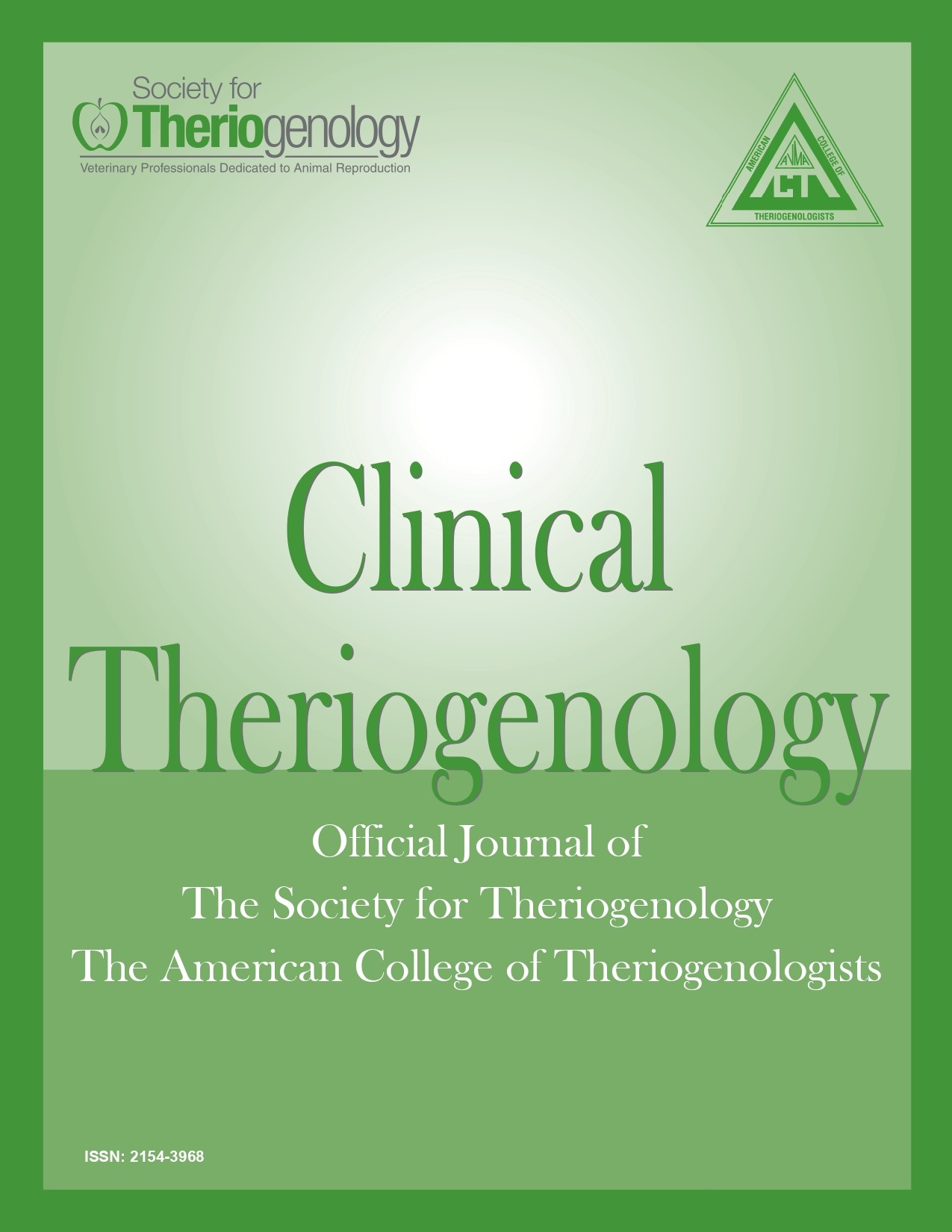Cervical duplication in dogs
Abstract
Two maiden bulldogs with cervical duplication were presented for breeding management. Dogs were successfully impregnated via endoscope-assisted transcervical insemination (TCI) and had their litters via cesarean surgery. A common uterine body between 2 cervical openings and 2 uterine horns was noticed (with no other reproductive abnormalities) at surgery. Duplication of the cervix has apparently not been previously described in dogs. With TCI becoming a more frequently used method of breeding, it is probable that defects involving failed or incomplete fusion of the paramesonephric duct during embryological development will be more frequently observed by clinicians.
Downloads

This work is licensed under a Creative Commons Attribution-NonCommercial 4.0 International License.
Authors retain copyright of their work, with first publication rights granted to Clinical Theriogenology. Read more about copyright and licensing here.





